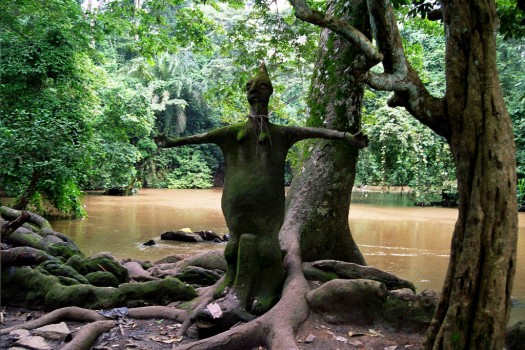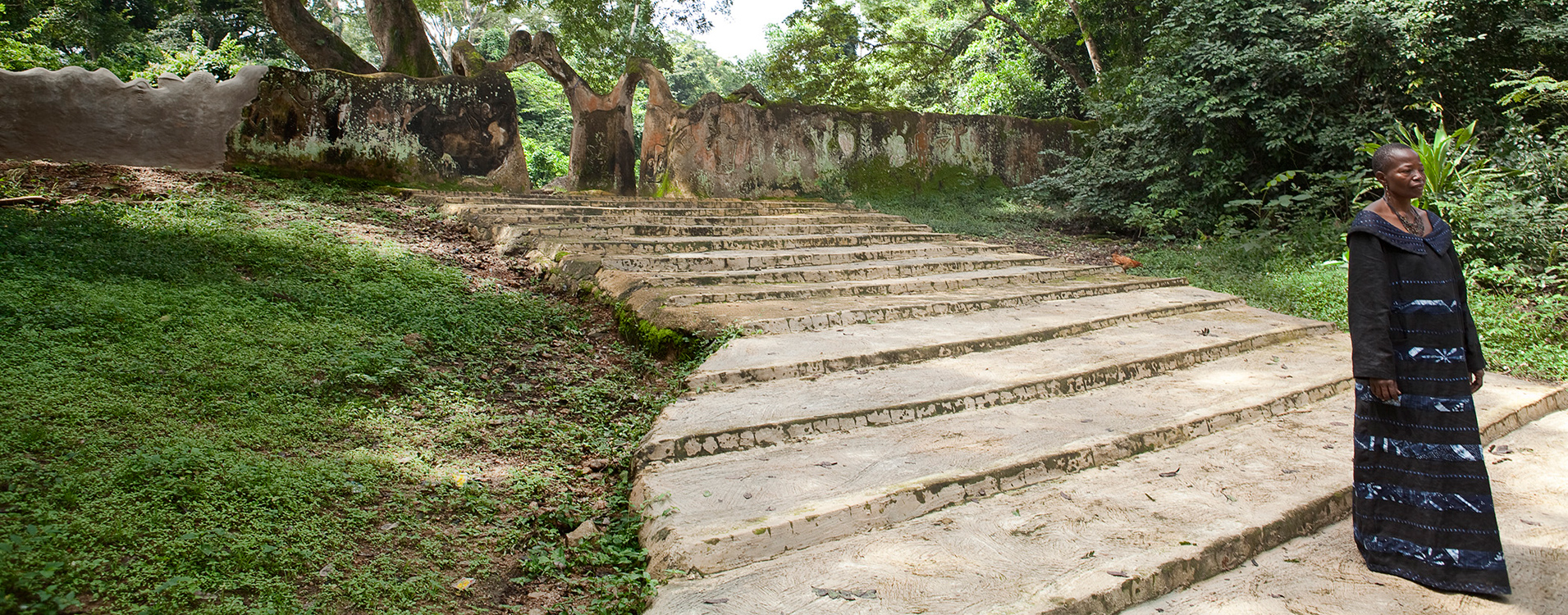Eredo walls...
 Said to be the largest earthbuilt wall!
Said to be the largest earthbuilt wall!



 Said to be the largest earthbuilt wall!
Said to be the largest earthbuilt wall!


 Said to be the largest earthbuilt wall!
Said to be the largest earthbuilt wall!

I love how Southern Nigerian architecture has such of a "mystic" to it...


Where is this from!??? I notice A LOT of pre-colonial SSA states had paved roads! Which MANY don't realize. Meanwhile in Europe at the same time the roads were muddy and shyt.



Igboland history is very underrated. You guys actually had writing scripts. Posted this in your Igbo thread.Igboland

(Source: Alok and Emangabe stone monoliths: Ikom, Cross River State of Nigeria,-Ezio Bassani, Arte in Africa (Modena: Edizioni Panini, 1986), 103. )The Ikom monoliths in Nigeria for example, frequently show several nsibidi designs such as carefully rendered concentric circles, spirals, lozenges, and other discrete figures. These have been dated by some scholars to 120-220 AD.
--Slogar C. 2005. ICONOGRAPHY AND CONTINUITY IN WEST AFRICA- CALABAR TERRACOTTAS AND THE ARTS OF THE CROSS RIVER REGION OF NIGERIA/CAMEROON. University of Maryland. 2005."The Calabar terracottas, found at the other end of the Cross River basin, offer additional early evidence of nsibidi... there are now five radiocarbon dates from Calabar and two from the nearby village of Okang Mbang that generally corroborate each other, and which are associated with hundreds of terracottas that display a considerable range of designs. Combined, the dates encompass the period ca. 450 A.D - 1440 A.D (Fig. 1.5)... When considered together, the individual Calabar results overlap significantly. For example, all five urban Calabar dates overlap in the eighth century, while two of them extend into the eleventh century, where the two Okang Mbang dates begin. Both Okang Mbang dates then correspond until the turn of the fourteenth century.
Thus, if what the archaeological evidence strongly suggests-that nsibidi is indeed a modern iteration of the iconography found on the terracottas-then nsibidi is much older, even more complex, and was distributed over a broader area than previously considered. In short, there is now physical evidence that nsibidi was already a sophisticated phenomenon fifteen hundred years ago! This is remarkable in light of what is currently known about indigenous scripts in sub-Saharan Africa and, therefore, these objects further (and strongly) refute the idea that Africans had no writing until the arrival of Europeans. If modern practices are anything to go by, these signs were not just found on ceramics, but also appeared on wood sculptures, calabashes, textiles, earthen architecture, and the human body, to name just a few examples that would not be expected to survive in the archaeological record of a tropical area such as Calabar.. it is telling that Amanda Carlson, [2003- Nsibiri, gender, and literacy] in her doctoral dissertation on the implications of nsibidi usage among the Ejagham, describes fluency with such signs as literacy."











WTF!?????
Osun-Osogbo sacred grove







shyt looks breathtaking and spooky at the SAME TIME! @The Odum of Ala Igbo @Don Drogo @Warthog @#1 pick